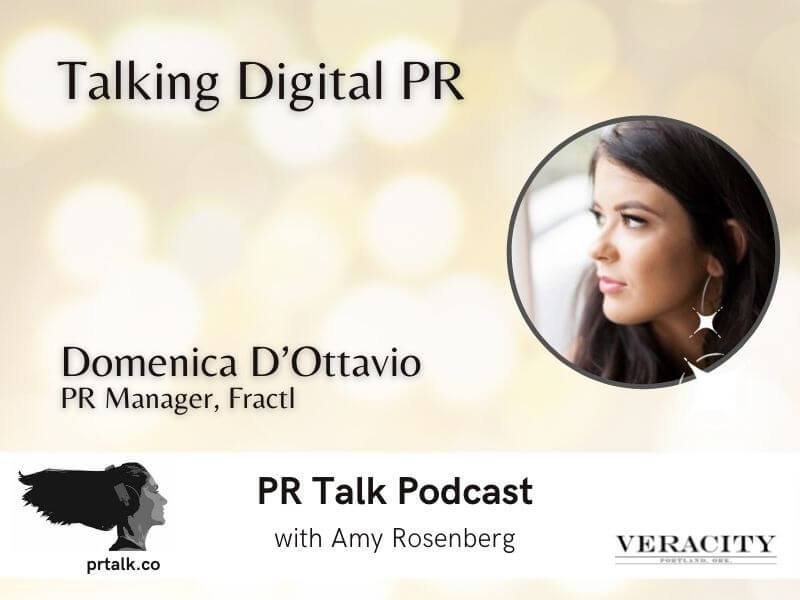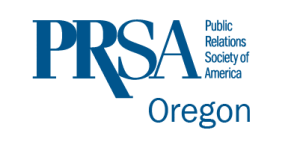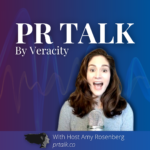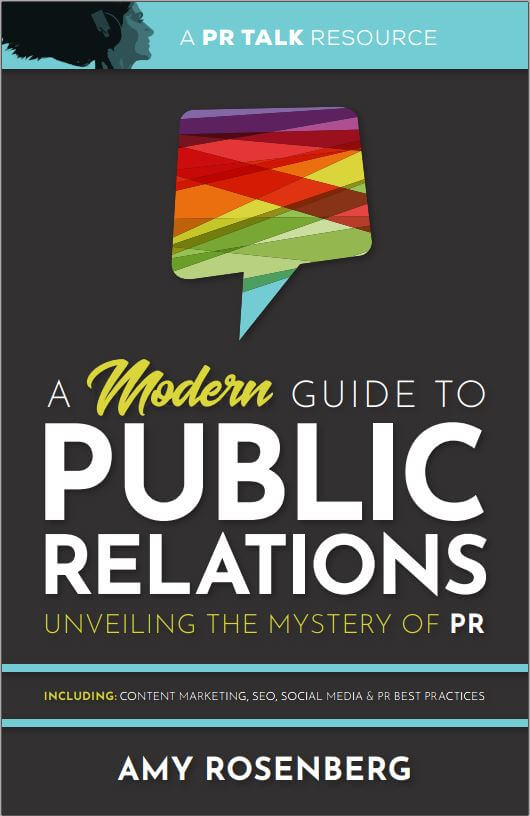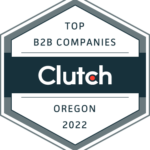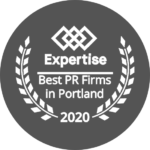In this week’s episode of the PR Talk Podcast, Amy speaks with Domenica D’Ottavio about why you should incorporate data into your content, online mentions, tips on how to pitch, and how digital PR, link building, and content intertwine.
Domenica is a content marketer and digital PR manager at Fractl. During her nearly six years at the agency, she has spearheaded dozens of top-of-the-line industry research studies to glean new insights into content, social media, marketing tactics, and digital PR strategies.
The Link Between Digital PR, Link Building, and Content.
As you may know, getting links back to your site helps improve your Google search page rankings. Domenica talks about the more diverse and relevant links to that page will make your site rank higher and make it easier for people to find you. Domenica also believes that digital PR is the best way to build links, which is done by creating data-driven content and sharing that with journalists.
Online Mentions vs. Links
Amy tells Domenica that she has heard mentions are perhaps just as good or better than getting a link back to your website. Domenica says she believes that having a link is always going to be beneficial. She describes how many sites use “nofollow” link attribute (where they have links on their site, but they tell Google not to use/follow it). Even though they do this, she believes that the link still has tremendous value.
Incorporating Data and Design Elements Into Your Content
Domenica shared a few ways to gather the correct data for your content. She recommends using clients’ data they have obtained through their services or social media. And, she notes, you can also search for readily available government or public data. If you find some interesting data, use it to craft an angle/story around it and share it with journalists who cover that specific industry. There is another way to get data, which is to create your own. Domenica does this by creating surveys with various survey tools like SurveyMonkey.
Domenica understands that data visualization is beneficial because it helps the reader quickly understand what the story is. Moreover, she points out that PR people highly outnumber journalists; and we are constantly sending them pitches. When you create an infographic or data visualization that easily explains your study, that helps journalists make a quicker decision. Then, if they liked your graphic, chances are they’d even include it in their story.
How do you pitch?
Domenica shares some of her findings from a study Fractl did in 2019, where they surveyed 500 journalists from The New York Times, BuzzFeed, Mashable, and more.
- Try not to send pitches that are too lengthy.
- 58% said the ideal length for a pitch was 100-200 words.
- 60% of journalists prefer one follow-up, and 25% prefer zero follow-ups.
- When is it acceptable to follow up?
- 57% said 3-7 days, and 25% said 1-2 days.
Domenica says to wait for at least two, maybe three days, to contact them again, and she also suggests sending a follow-up that isn’t too demanding and perhaps even shares new information.
Amy and Domenica go more in-depth on the differences between digital and traditional PR. They also talk about a practice called “Germ Swabs.” What are Germ Swabs? Find out by listening to the full podcast!
Don’t Miss an Episode
You can access more great episodes by subscribing to the PR Talk podcast on iTunes, Stitcher, Google Podcasts, iHeart Radio and Spotify.
About the guest: Domenica D’Ottavio
Domenica D’Ottavio is a content marketer and digital PR manager at Fractl. She has secured hundreds of top-tier placements for clients throughout her career at publishers like The New York Times, Huffington Post, Buzzfeed, Mashable, CNN, and TIME. Her advice and findings are also available on Moz, Search Engine Journal, Marketing Land, Marketing Profs, PR Daily, Content Marketing Institute, and more.
Connect and follow Domenica on social media:
This episode of PR Talk is brought to you by PRSA Oregon
Throughout Oregon and Southwest Washington, PRSA provides members with networking, mentorship, skill building and professional development opportunities – whether you are a new professional fresh out of college or a skilled expert with 20 years in the industry. Check out PRSAoregon.org for more information on how membership can help you grow and connect.

